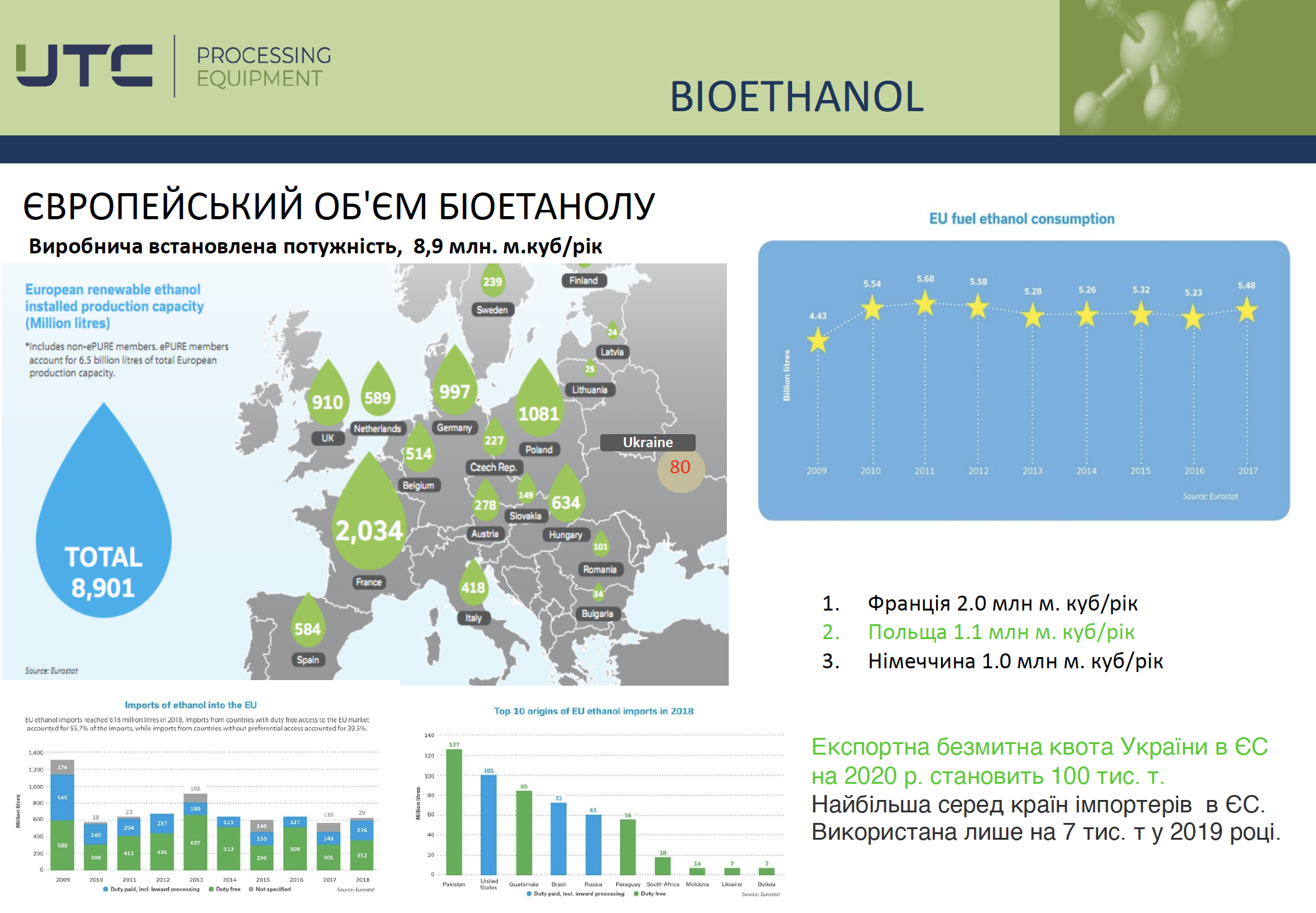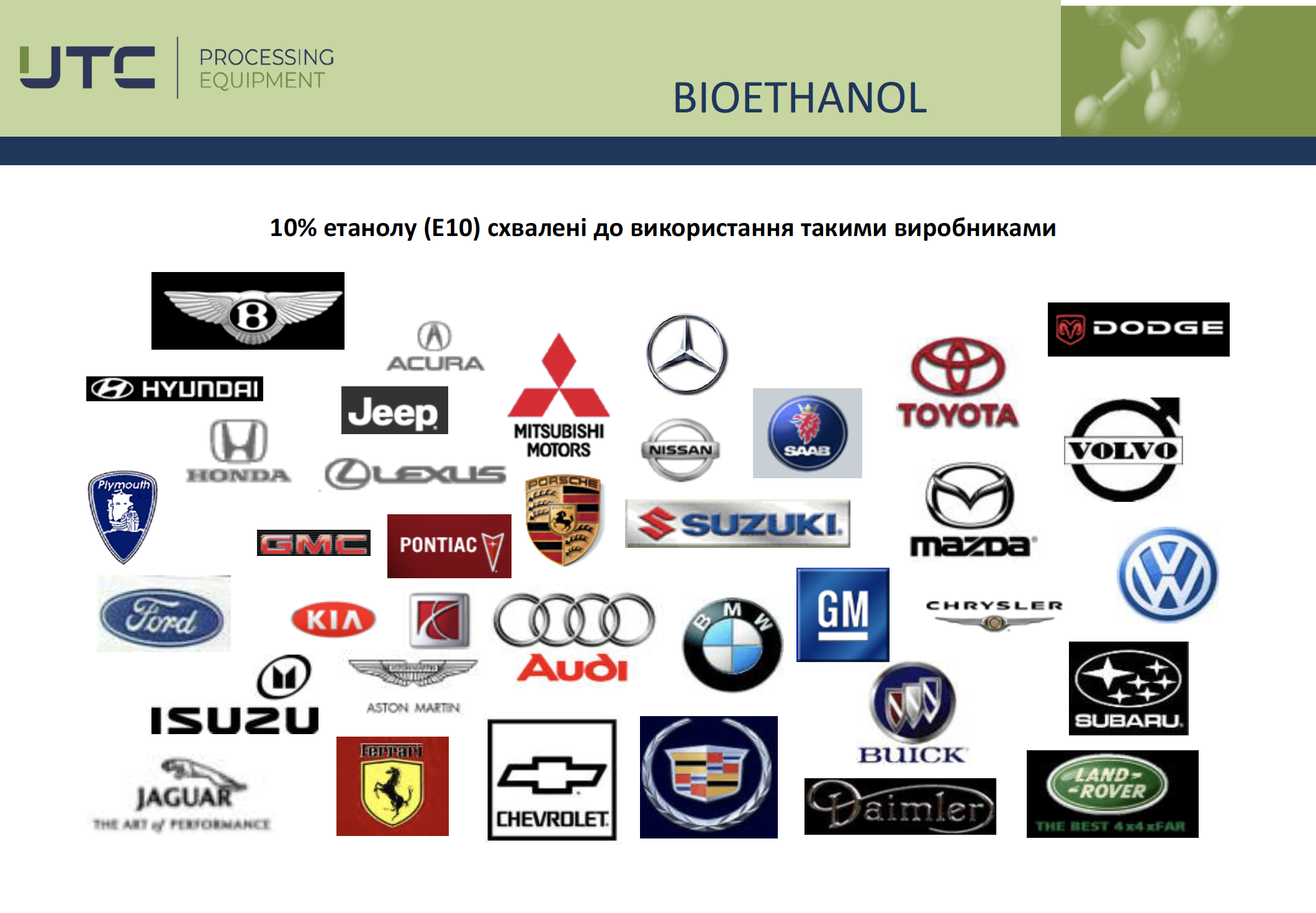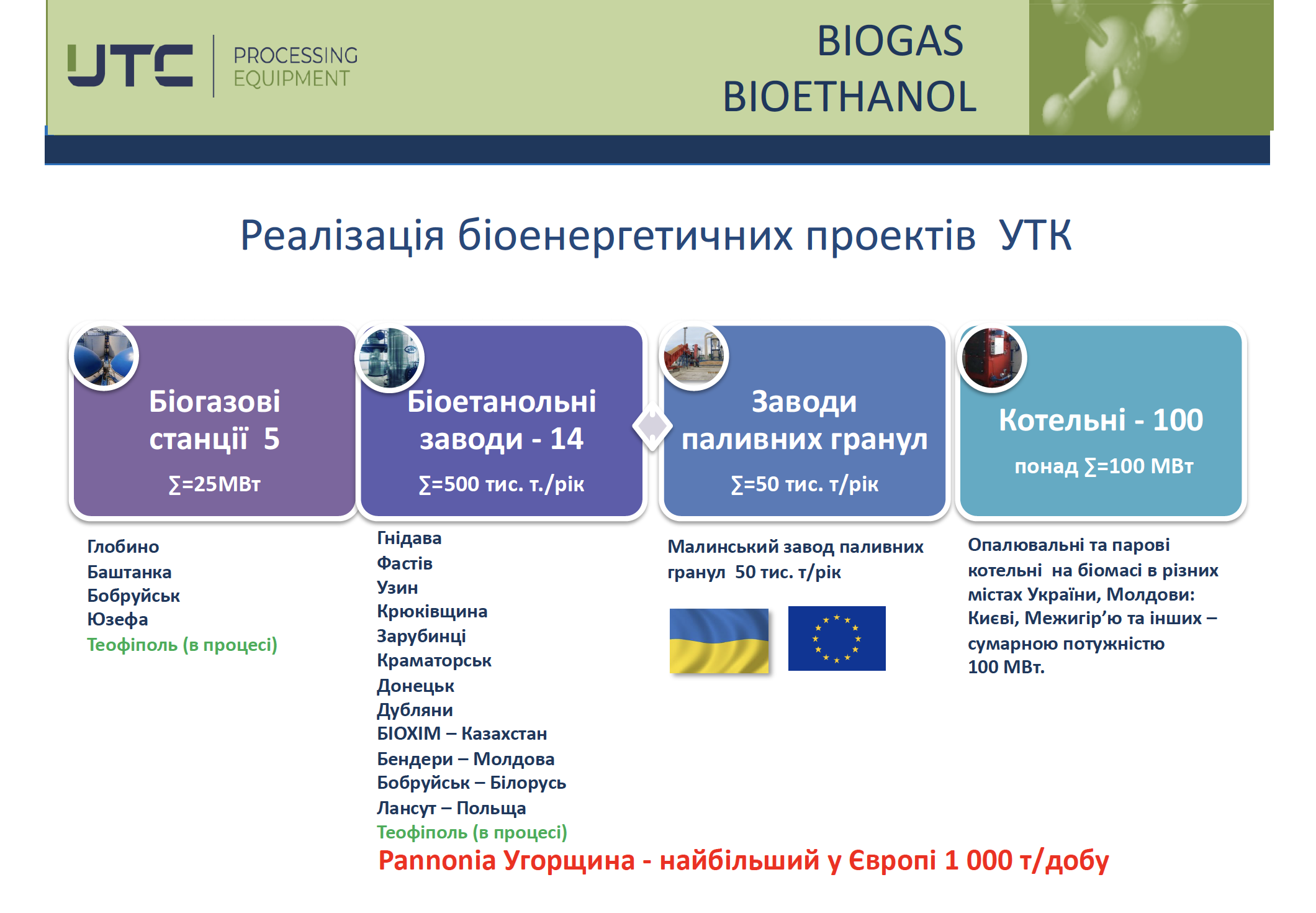Bioethanol: UTC experience
Bioethanol is a dehydrated ethyl alcohol with all concomitant impurities and a water content of up to 0.2%. Octane number 108. It is soluble in gasoline or diesel fuel and dissolves water in fuel. Is not only a component of fuel, but also an energy source. It is added to gasoline and diesel fuel.
Bioethanol raises the total octane number, raises the efficiency of the engine, increases the oxygen content in the fuel up to 3.7% and reduces emissions of PETROL, dioxins, carcinogens. Reducing CO is an indicator of harmful emissions and human health.
We offer to get acquainted with the presentation of a member of UABIO – the Ukrainian technology company (UTC) on the features, benefits and experience of bioethanol usage.
- UTC presentation “Bioethanol – practice and application. Ecology, energy, efficiency” (in Ukrainian).
A new step of the bioethanol development began with the discovery of dangerous content of methyl tertiary butyl ether (MTBE) in the atmosphere and water in the 2000s in the United States. It was later banned for use. Bioethanol replaced it.
In the world, 82% of ethanol is used as a fuel, for technical purposes – 9% and only 9% – for alcohol production.
UTC
The biofuel sector is becoming increasingly important in the world economy. And Ukraine must be a participant in these changes.


That’s why:
- Biofuels are used in more than 70 countries, and state programs have already been approved to support the production of environmentally friendly fuels.
- In all developed countries of the world production and improvement the composition of ethanol-containing fuels continue to increase.
- Automakers are making design changes to engines, adapting them to biological fuel components.
- Biofuel production creates the basis for Ukraine’s food and energy security and improves environment and public health.
UTC Bioenergy Projects

- 5 biogas plants with a total capacity of over 25 MW.
- 14 bioethanol plants with a total capacity of 500 thousand tons per year.
- Fuel pellet plants with a total capacity of 50 thousand tons per year.
- Biomass heating and steam boiler houses in different cities of Ukraine and Moldova with a total capacity of 100 MW.


